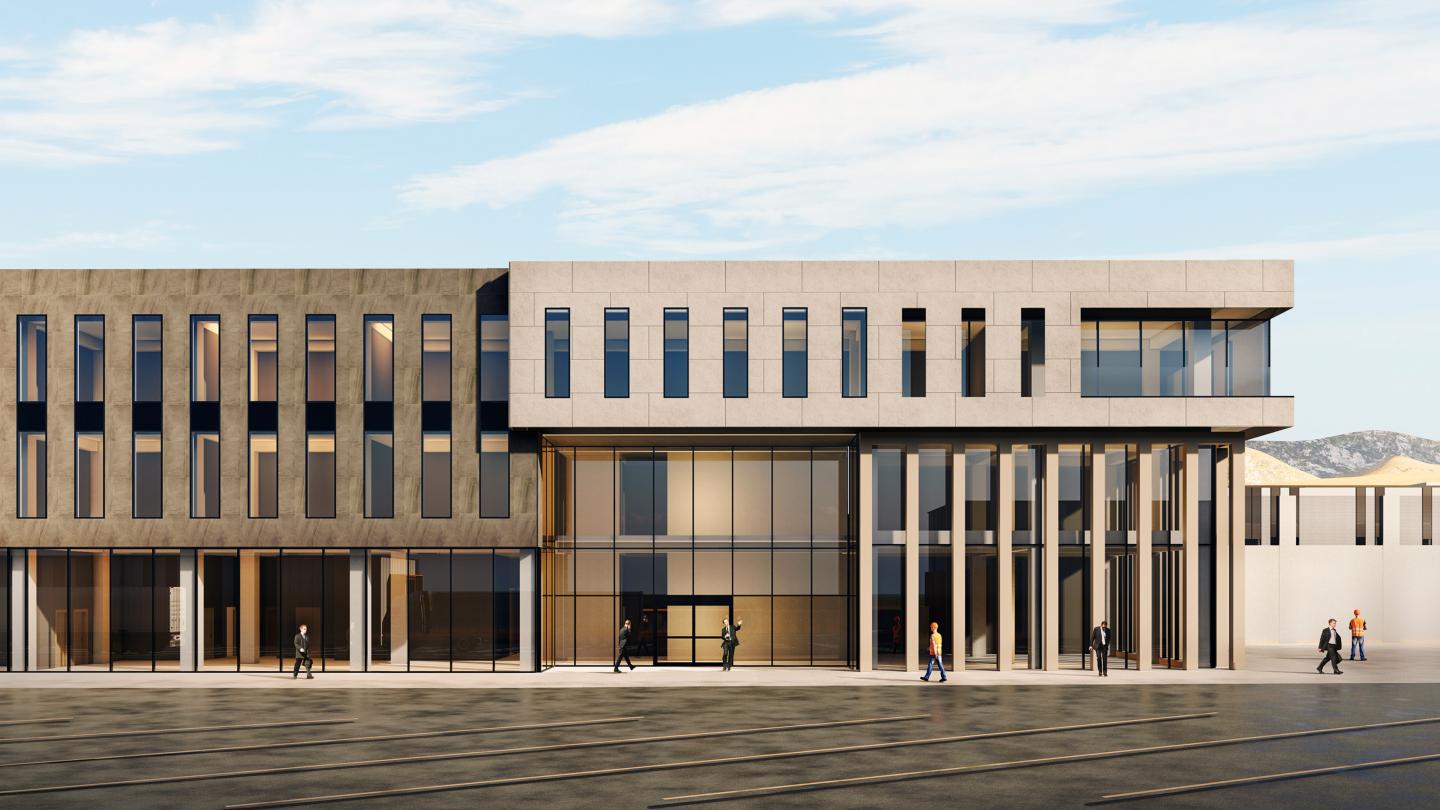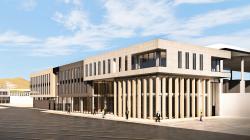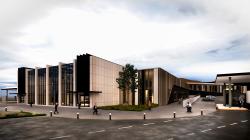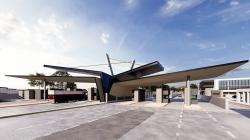Situated east of downtown Ağrı Province, between the borders of Türkiye and Iran, the Gürbulak Border Gate and Transit Center was designed by Aura Design Studio as Türkiye's third largest border gate. The project is centered on a busy connection point for regional logistics networks, bus and truck lines, and passenger transits. Designed to eliminate existing infrastructure, logistics, security, and spatial deficiencies, the area encompassed in the project was expanded, all structures were redesigned and new buildings were added. Aura Design Studio provided the master plan of 32 different buildings with an enclosed area of 80,000 square meters, slated to be erected over a land area of approximately 324,000 square meters, with the BIM coordination of all structures.
The Symbolic Connection Gate Between Türkiye and Iran
In aiming to achieve a safe, efficient, and user-centered design, as well as creating a spacious welcoming border gate venue inspired by traditional Anatolian archaeological motifs, the entire project phase was completed in 2021, whereas the site is currently under construction. The entry gates in question bear plenty of meanings symbolizing the ties between Türkiye and Iran. For instance, the double-headed eagle is an important element of Turkish and Altai mythology perched at Heaven’s Gate. It symbolizes night and day, white and black, light and dark, and double contrasts in the universe. While the double-headed eagle motif was a prominent element of the flag and coat of arms of the Seljuk State. It was found in artwork dating from the Sumerian and Hittite civilizations. From them, this symbolism passed to the Acadian, Assyrian, Sassanid, and Byzantine civilizations. While this was the situation in Anatolia, the eagle also guarded the steel door between Earth and Sky in Central Asia based on Shamanism-based beliefs. Entities in the form of birds would accompany people on their journeys to Heaven as well as on Earth. Amongst all bird species, the eagle is the epitome of greatness and height.
Influenced by this symbol, entrance arches reminiscent of the double-headed eagle symbol were designed for the Anatolian entrance gate. The day and night perceptions of all buildings in the border zone, which will operate around the clock, were given equal importance. Special facade lighting systems were incorporated into the design.
New forms of permeability were sought through the vertebrae inspired by majestic and lofty themes in the motifs as well as the surrounding free forms.
Strong Relationship Established with Topography
The reception areas are located at the border of the zone so that the strategic points in the topography are utilized in a way that facilitates maximum use of space. Separate security points were created at the border gates for buses, cars, and pedestrians entering the zone, whereby the passenger structure, including the passenger lounge, was designed to facilitate entry and exit from two different levels. Tunnel structures with inner courtyards were designed to organize the safe entry and exit of passengers. The structure was taken up as a terminal structure encompassing commercial, social, and security units.
Administrative and commercial buildings were designed with the architectural program and facade concept that will attract zone visitors inside while providing the requirements for various levels of security. The zone encompasses a passenger hall structure, administrative and commercial complex structures, search hangars, x-ray structures, examination platform structures, a technical structure, a narcotics detector, a dog shelter, a contraband warehouse, an agriculture veterinary control and quarantine building, a regional directorate, a mosque, as well as the Iran entry and Türkiye exit frontiers in its retinue.
The concept, material choice, and structural elements of the facade in question were determined by considering the building’s geographical characteristics, with an aim of sustainable design in accordance with the harsh climate.
2021
Total Construction Area 324.000 sqm
Project Size 80.000 sqm
Filiz Cingi Yurdakul,
Elif Düzel, Şeyda Nur Turunç, Yusuf Ertaş, Cansu Usta, Dilara Akkurt







